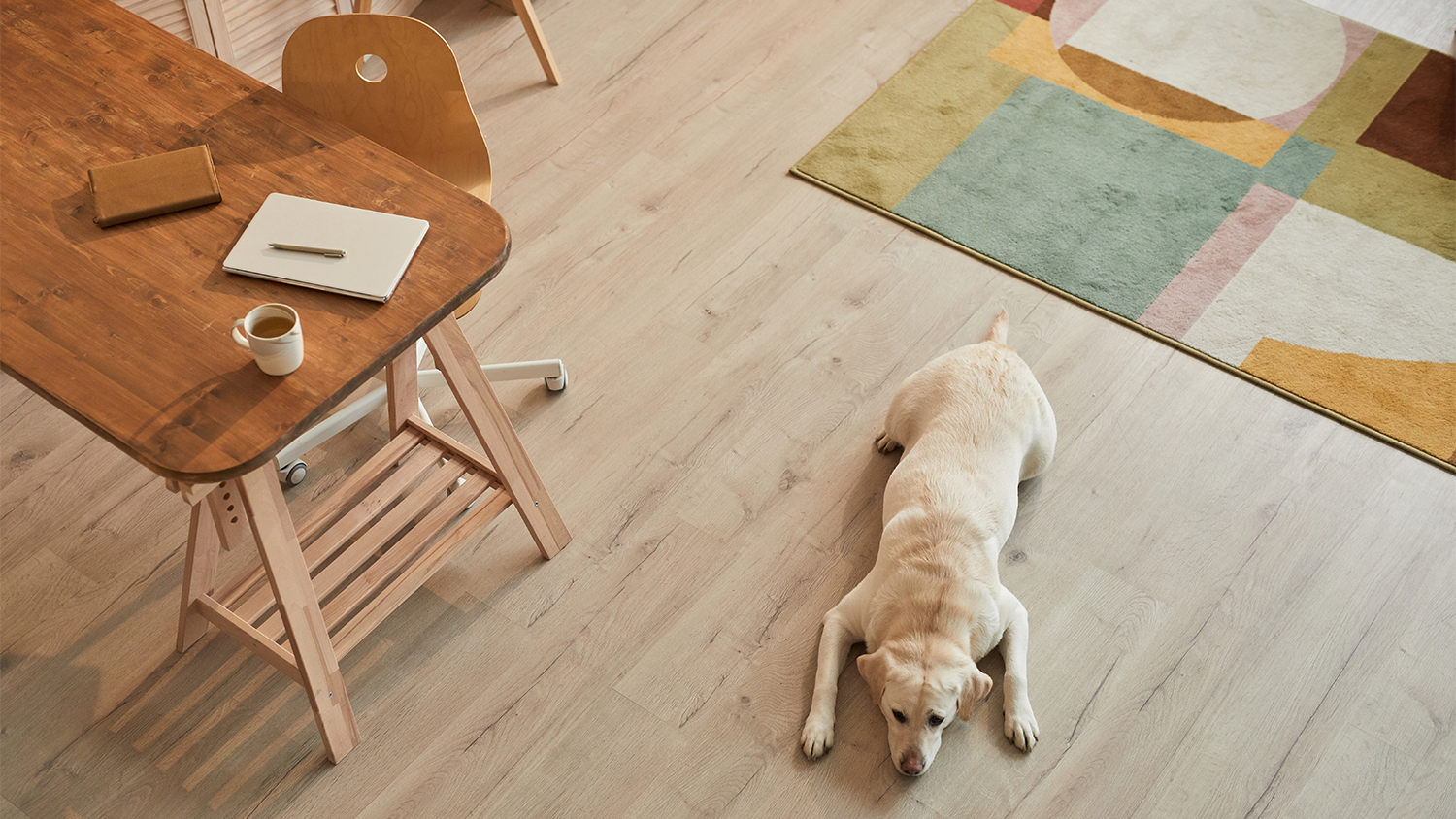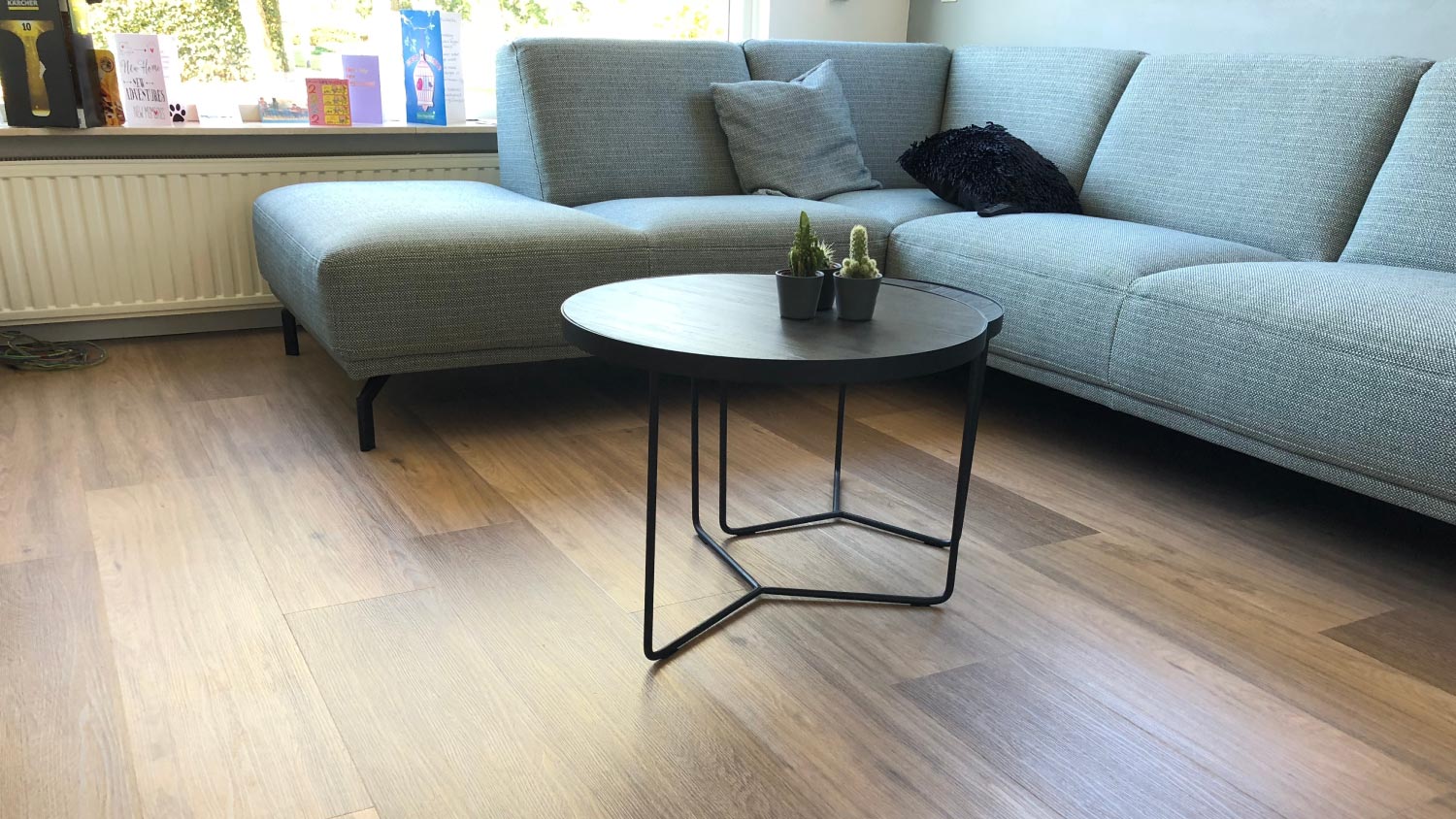
Updated flooring can make any room in your home feel brand new. Explore flooring installation costs in Baltimore, MD, from materials to labor costs.
Here is everything you ever wanted to know about transition strips


Transition strips can improve your home's safety and design.
Aluminum transition strips are the most budget-friendly.
You can stain or paint many transition strip types to match your aesthetic.
Transition strips typically cost $1–$30 per square foot.
Flooring transition strips can make your home safer while enhancing your space’s aesthetic. They can also help reduce noise between rooms. But not all transition strips work for all scenarios. To help you make the right choice for your home, we cover everything you need to know about transition strips, including common uses, materials, sizes, and prices.
Transition strips offer an attractive way to cover the seams between two different floor types. For example, if you have a carpeted living room but your dining room has wood floors, you can use a transition strip to cover the seam where the carpeted and wood floors meet.
In addition to making the seam more attractive, transition strips help prevent trips and falls since they make it easier to see where the floor type changes. Transition strips can even help reduce noise levels when installed beneath a door.
When two different floor types meet—like wood and tile—transition strips are frequently used to even out the differences between the floors' heights. They also provide a subtle yet noticeable visual cue about the flooring change to help prevent tripping.
When two similar floors meet, such as two wood floors, it is not always necessary to have a transition strip, particularly if the floors are the same height and material. However, there is often a small gap between two similar floor types to account for contraction and expansion, so many people use transition strips to cover it. Transition strips also offer an attractive way to divide one room from the next, so many people use them for aesthetic purposes even if they are not functionally necessary.

Different types of transition strips, also called flooring thresholds, are used for different flooring types. Use this list to determine which transition strip type you'll need for your floors.
Hardwood or vinyl transition strips often separate vinyl and tile floors. Since vinyl almost always has a lower height than tile, these transition strips feature a slope, with the higher portion attached to the tile and sloping down onto the vinyl floor.
This transition strip type is called reducer molding, which references the slope helping to reduce the height difference between the two floors. These strips often come unfinished, so you can stain or paint them to match your floors.
Laminate to tile transition strips are typically the same as vinyl to tile transition strips. Like vinyl, laminate usually sits lower than tile, so these transition strips (also called reducer molding) feature a slope to account for the height difference. Often composed of hardwood, the strips feature offset grooves to lock in tightly with both flooring types.
There are lots of carpet transition strip options out there, and they all help protect your carpet edges from wear, including curling and fraying. The strip type you need for carpet to tile depends on whether the two flooring types are the same height or not.
In most cases, the height of the tile will be the same as your carpet (or no more than ⅛-inch different), so the best option will be a T-molding strip or Z-molding strip. These are named to reflect their shapes. For Z-molding strips, it works best to install the carpet before the tile.
If there is a height difference, use a tiling transition strip like a reducer strip for a smooth and slightly sloped transition.
Rather than standard transition strips, carpet to carpet transitions usually involve an aluminum strip called a carpet edge gripper. The gripper is installed on the subfloor and features top teeth onto which the backings of both carpets attach. Carpet edge grippers help hold both carpets taut and flush with each other.
Seam binders are typically used to create a transition between wood floors. Seam binders are flat strips of wood, usually about five inches wide, with beveled edges. They often come unfinished, so you can stain them to match your wood floor stain.
You can use T-molding to combine any two hard surface floors. These strips are shaped like a T, with the vertical part of the T wedging down between the two floors, where it attaches to the subfloor, and the horizontal part of the T covering the seam. The top of the T sits near the floor's surface, creating the transition and also hiding any expansion gaps. Usually made of aluminum, T-molding comes in several colors, but it can be tough to find strips that match both of your floor types.
The 4-in-1 transition strips are a great solution since they can be modified to work in one of four different transition types. So, if you are not sure about what you will need, you can grab one of these at the store without having to worry about doing a last-minute exchange. These strips can be used as a T-molding, a reducer, end molding, or a carpet transition.
Transition strips come in a variety of materials to suit different floor types and aesthetics, but most transition strips are made of hardwood, aluminum, or vinyl.

Aluminum is often used when transitioning two hard surfaces, like vinyl and concrete. However, it is not as common to use aluminum transition strips for hardwood floors since they do not match as well as hardwood transition strips. These do not typically come with slopes built in, like reducer molding, so they are most common between two floors of the same height.
Hardwood transition strips work best when transitioning between two hardwood floors or a hardwood floor and another surface. These transition strips come in a range of shapes to suit floors of different heights.
Vinyl transition strips are used in the same scenarios as hardwood transition strips, but they are usually more affordable and not quite as durable. Vinyl transition strips come in many different colors and shapes to complement various interior designs. You can also purchase vinyl transition strips that look very similar to hardwood transition strips but cost less.
Transition strips come in many different sizes, but they usually range from about two inches to five inches wide. Seam binders and reducer molding tend to fall closer to five inches, while aluminum strips are usually closer to two inches. The best width for your project depends on how visible you want the transition strip to be and how wide your seam is.
| Transition Strip Size | Common Types | Cost per Linear Foot |
|---|---|---|
| 1” – 1.75” | Stair edging/nosing, T-mold, Z-bar, Reducer, Seam binder, Carpet trim, Floor transition, Multi-floor transition | $0.40 – $5.60 |
| 2” – 2.5” | Carpet trim | $0.75 – $5.30 |
| 3” – 4” | Seam binder | $5.70 |
| 5” | Seam binder | $4.20 |
Transition strips can range from $1 to $30 per square foot. The biggest factor affecting price is the transition strip's material and finish. Hardwood transition strips with a custom stain will be on the higher end of the cost spectrum, while basic aluminum transition strips are the most budget-friendly. Vinyl transition strips typically fall in the middle. Consider requesting a quote from a flooring installation pro near you for a more detailed breakdown of your project.
| Transition Strip Type | Cost per Linear Foot |
|---|---|
| Aluminum | $1.30 – $4.90 |
| Wood | $3 – $5 |
| Vinyl | $2 – $4.60 |
Learning how to install doorway transition strips and strips between flooring types is a must if you are working with flooring. Here are some tips to make the process go as smoothly as possible.
For one, make sure that you are using the right type of transition strip. Also, your installation process will depend on the surface types.
Whatever you are working with, it is important to have the proper measurements for the gap between the flooring and for the length of the transition strip. You should account for expansion spaces for wood-based flooring and, whenever necessary, pre-drill your wood transition strips before installing nails.
Also, if you are installing a transition strip in a doorway, you may need to cut notches on the edges since most doorways do not have a flat edge.
From getting an estimate to ordering flooring to installation, Randolph and Mortimer was outstanding. This was a large installation in a commercial building but they worked with us to install the flooring quickly and around our scheduled open hours. The flooring installers were efficient and...
Allan gave a proper detailed estimate with all items explained thoroughly. The team that installed the new roof were as professional as Allan told me they would be. Well done to Allan and the THR team.
Lazy white male racist worker refused to clean grease trap properly 'often allowing the grease trap to overflow onto our haveli Indian cuisine kitchen floor..when i asked him to clean the grease trap walls 'he would scream that's not my job you have to pay more..i told the owner of the...
They're very punctual not just with arriving for their installation but also with the whole service. The whole front yard landscaping was finished right on time and everything just looks amazing!
Aleks and crew did their usual good job, on time and under budget. Everything went as expected for the project that lasted several weeks. Aleks was kind and patient as we worked through the project. We are thrilled with our new kitchen, new flooring, and repainting. We've used Aleks many...
It went well. They were slower than I expected (it took longer to pack the truck from my townhouse than it did to pack it when I moved into the townhouse 2 years earlier and that was from an apartment that wasn't as convenient as the townhouse. However, they got it done. They were nice and...
TOOK 2 WEEKS FOR THE SALESMAN TO CALL US. SAID WE DIDNT NEED A SUBFLOOR BUT WE WANTED ONE INSTALLED. THEY DIDNT BRING ENOUGH SUPPLIES TO COMPLETE THE WORK ON THE FIRST DAY. THEN THEY SAID THEY WANTED TO INSTALL A SUBFLOOR BUT COULDNT DO IT FOR 2 WEEKS. MANAGER WAS PRESSING US FOR PAYMENT...
From average costs to expert advice, get all the answers you need to get your job done.

Updated flooring can make any room in your home feel brand new. Explore flooring installation costs in Baltimore, MD, from materials to labor costs.

Polished concrete floor costs depend on the size of the area you’re targeting and the style of concrete floor. Our guide breaks down all the cost factors.

The cost to rip up carpets and install laminate depends on factors like labor prices, materials, and location. Use this guide to get a detailed cost overview.

Confused about what type of plywood is best for subflooring? This guide tells you all you need to know, based on the unique requirements and scope of your project.

Looking for some durable yet stylish entryway and mudroom flooring options? Check out our list of some of the best types here.

Updated flooring can make any room in your home feel brand new. Explore flooring installation costs in Atlanta, GA, from materials to labor costs.